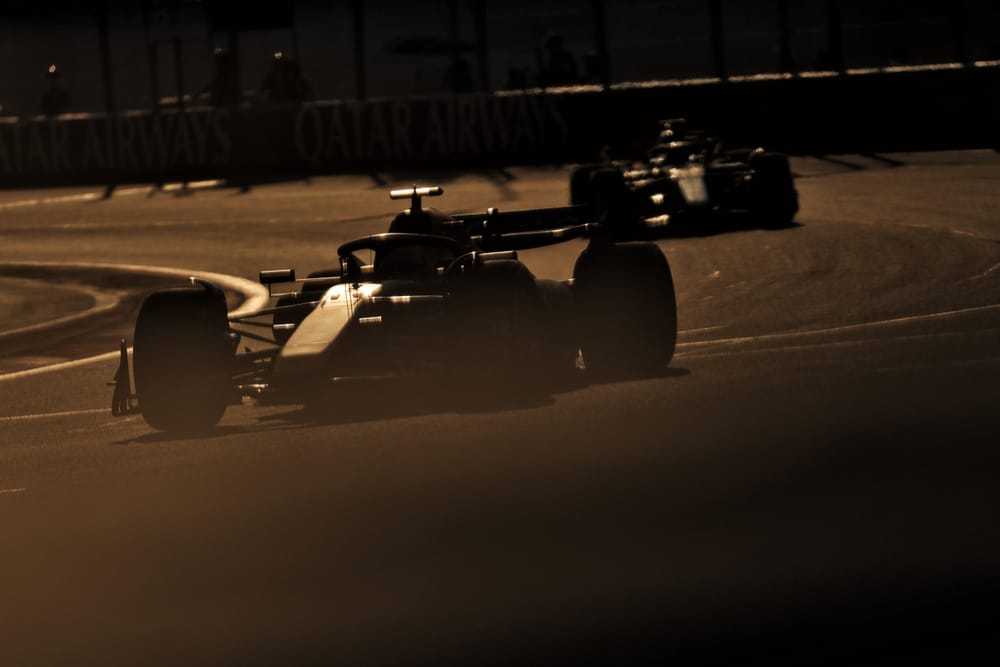Formula 1’s 2025 constructors’ championship is already settled in McLaren’s favour, but further back, there is an almighty scrap between four teams worth $30million to whoever comes out on top.
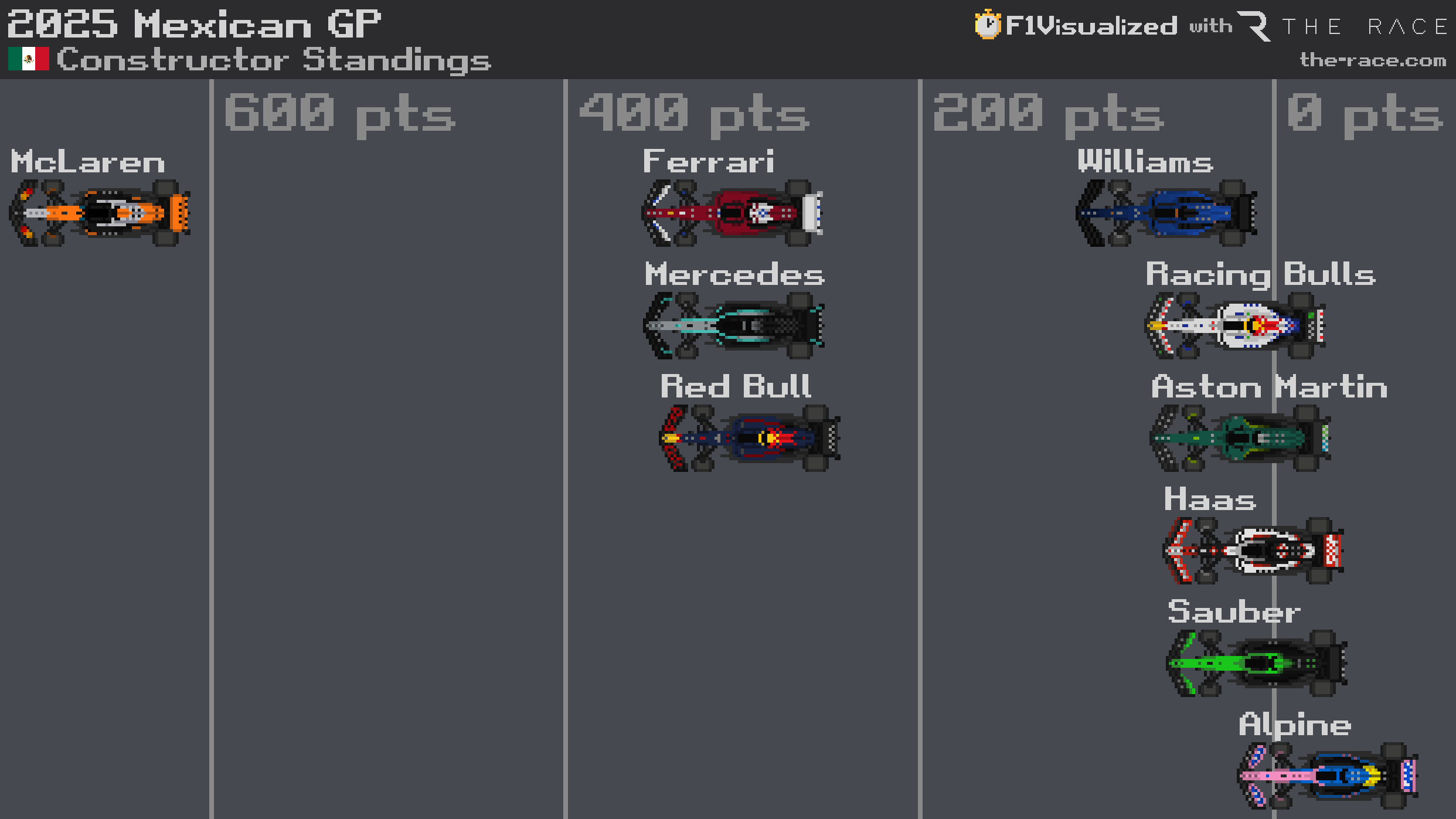
It would take an almighty collapse for Williams to lose fifth place now, just as it would take a borderline-impossible transformation for Alpine to stop it being F1’s worst team, but in between them are four teams separated by just 12 points in a battle that has just been blown wide open by Ollie Bearman’s incredible fourth place finish in Mexico.
Each position in the championship is worth just under $10million to the teams in prize money and that kind of money matters a lot to every midfield team.
Here are five reasons F1’s $30million championship battle has suddenly become one to watch.
A powerful resurgence
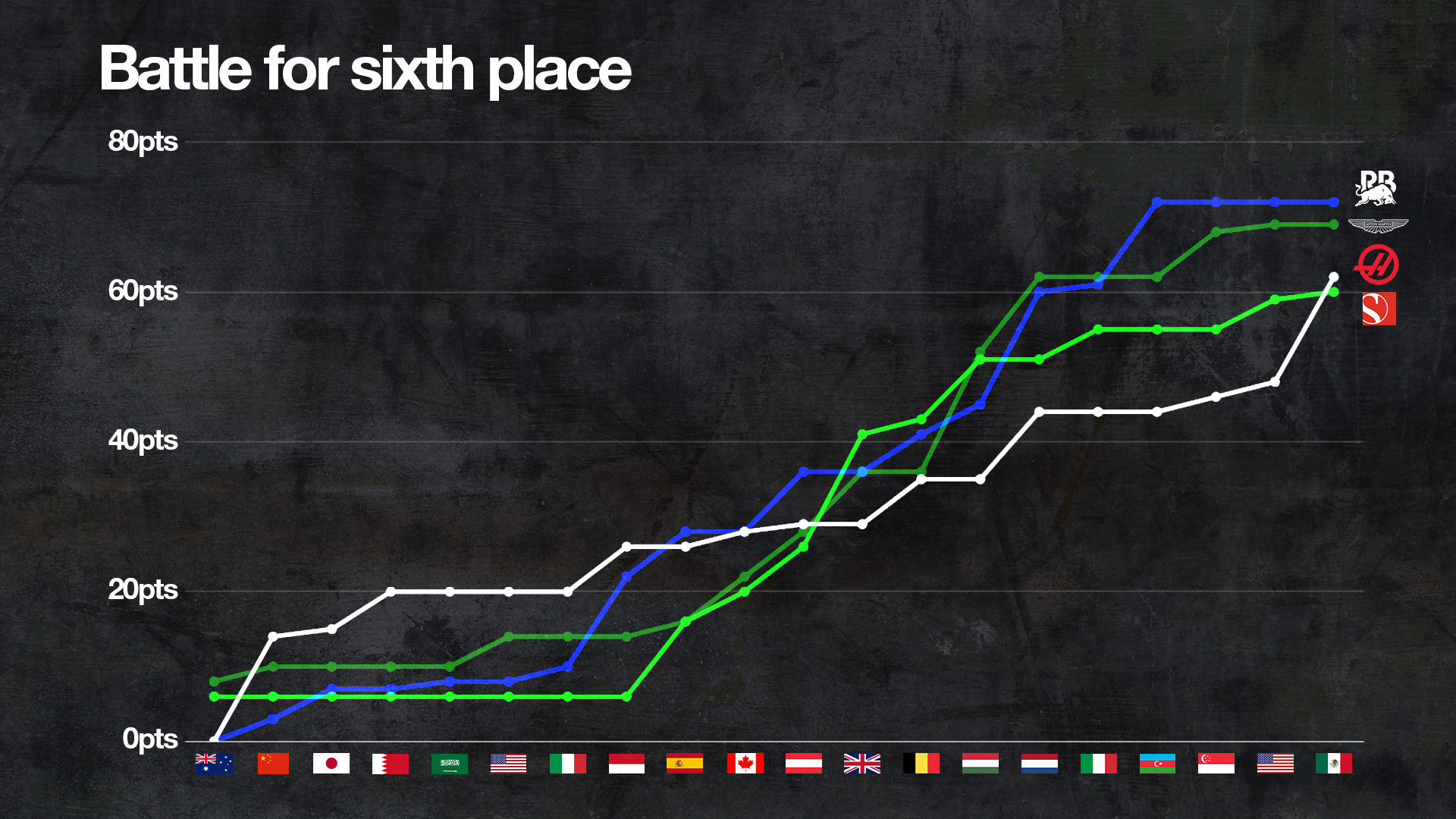
The transformation of Haas is at the heart of this, going from a team that was cut adrift at the back of the grid at the season opener, to a team with a fast car that it kept failing to translate into points, to now being a team that has shown it can operate at the front of F1’s ultra-competitive midfield group and claim a big result when the top four teams slip up.
"I cannot remember, and I've been doing this for 22 years, having this level of car and then not converting it this much," team principal Ayao Komatsu told The Race before the US-Mexico double-header.
Spa was a classic example: both cars scored points in the sprint race, but when it came to the business end of the weekend a combination of the drivers narrowly missing Q3, an incorrect downforce level for the race on Bearman’s car, a small engine problem, and poor pitstop timing for Esteban Ocon, meant zero points from a grand prix where Haas was comfortably fast enough to have both cars in the top 10.
As Komatsu put it, the team had been “leaking points, left right and centre”.
He said that’s because the team had the wrong mindset: trying too hard to force results and chase races.
But in Mexico the story was different. Haas utilised its latest upgrade to brilliant effect, getting both cars into the top 10 and matching its biggest points haul of the season.
For Bearman, it was a third consecutive points finish, as well as a career-best result, so he is also showing that not only is the car in a much better place now, he is converting the pace we all know he has by cutting out the errors.
Komatsu puts this progress down to a mindset shift: Bearman showing better judgement in how close to push the car to the limit and driving more within himself, while the team as a whole focuses on executing every single session correctly and not getting carried away with a championship battle it has suddenly propelled itself right into the middle of.
An ill-timed slump
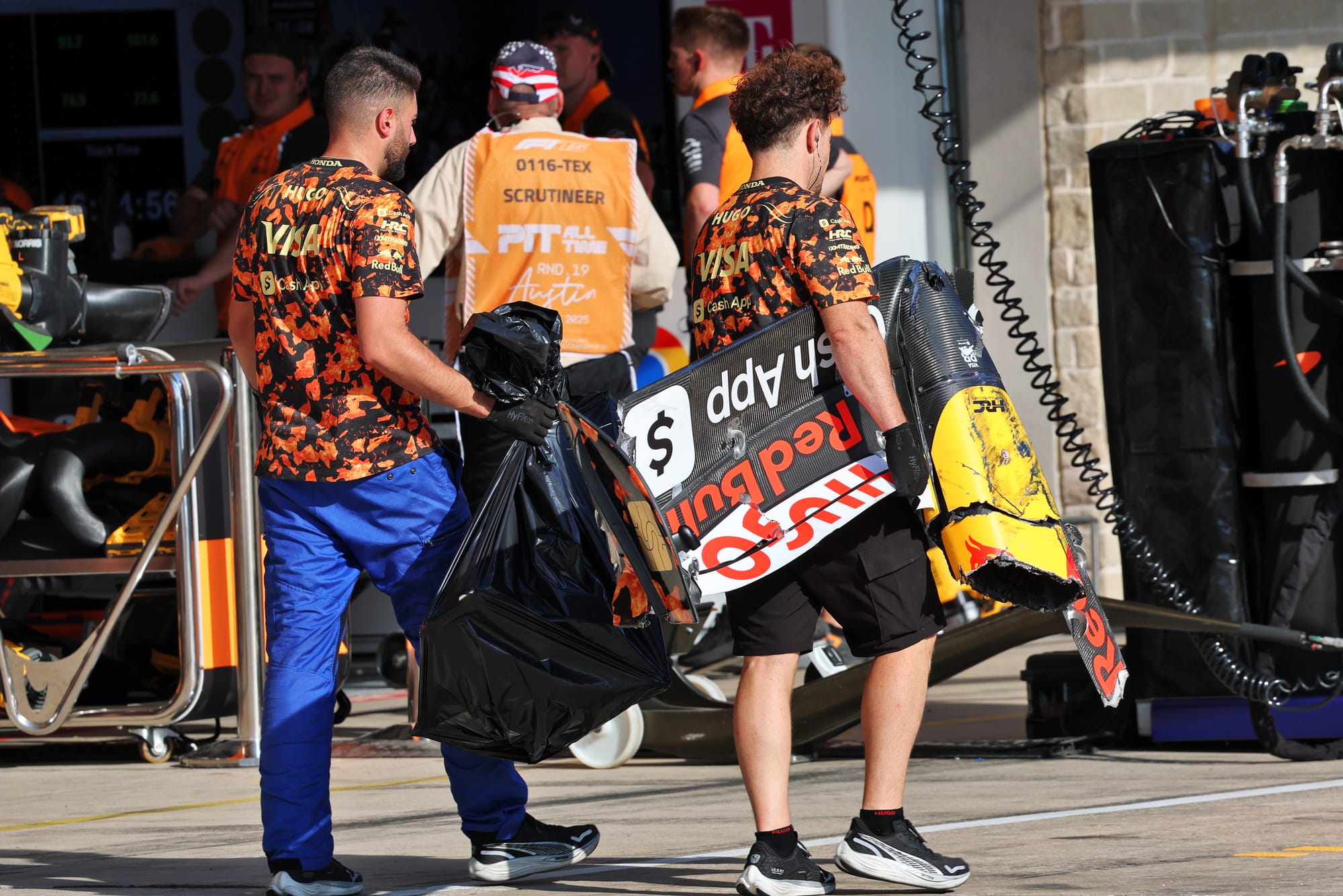
Racing Bulls heads this tight group, but there are concerns about its recent form given it’s currently on a run of three events without a point. Its worst run of the season has allowed Aston Martin, Haas and Sauber to close the gap.
Of late, qualifying form hasn’t been a concern. Isack Hadjar has reached Q3 in two of the last three grands prix, including in Mexico last weekend. But his race there began to go wrong on the first lap when he had a big moment at Turn 6 and lost three places. He ultimately lost 10th place to Sauber driver Gabriel Bortoleto in the closing laps. While his final-stint struggles were partly because he had to run used softs, he’s also pointed to a trend of weaker race pace than qualifying pace.
While a little Sunday speed would come in handy, there are other reasons why points have been elusive lately. In Singapore, Hadjar would likely have scored but for the recurrence of a Honda power unit problem. His crash on the first lap of qualifying at Austin meant he was always up against it in the chase for points, and although he faded to 13th in Mexico, he did at least come close.
Team-mate Liam Lawson has had some strong weekends this year, most recently his outstanding fifth place in Azerbaijan before this dry spell. However, usually Hadjar has been the faster driver and Lawson lacked pace in Singapore, by his own admission, lacked the edge when points were possible at Austin and finished 11th, then had a terrible Q2 session in Mexico before being hit at Turn 1 by Carlos Sainz.
Lawson’s appraised the car as being consistent across the board, but lacking ultimate speed. With no more major upgrades to come, that piles the pressure on Racing Bulls to find ways to improve its race pace if it’s to have any chance of holding onto sixth.
Which drivers are making the difference?
This battle is one in which the drivers will be worth their weight in gold - literally.
Bearman’s remarkable fourth place moved Haas from ninth to eighth. Bearman weighs 78 kilos – at today’s prices, that’s around $10million in gold, which isn’t far off what a team gains by jumping a place in the championship.
With the performance of the four teams in this group so tightly packed that makes execution by both team and the driver potentially the decisive factor.
Points contributed to F1 2025's $30 million fight
1st Hulkenberg - 41
2nd Hadjar - 39
3rd Alonso - 37
4th Bearman - 32
5th Stroll - 32
6th Lawson* - 30
7th Ocon - 30
8th Bortoleto - 19
*From race three onwards
A glance at the points standings for the drivers in those four teams can be split into two groups, with a lead driver for each team – Nico Hulkenberg for Sauber, Hadjar for Racing Bulls, Fernando Alonso for Aston Martin and Bearman for Haas in the top four. However, it’s close between the drivers at both Haas and Aston Martin, although Lance Stroll is on a five-weekend point-less streak.
Plenty of these drivers have been able to seize big results as well, with all eight of them picking up at least one top-six finish. Hulkenberg finished third at Silverstone, with Hadjar matching that at Zandvoort, proving that there can be a big points hauls on the cards for any driver at the top of their game.
Consistency of scoring will be key, but so too will be maximising such opportunities. Last year, Alpine made the most of a wet race at Interlagos and bagged second and third place with Ocon and Pierre Gasly and 33 points – an astonishing 54% of its total for the whole year – and leaped from ninth to sixth in the championship. A haul of that magnitude could potentially give any one of these teams sixth place. And last year it earned Alpine an extra $33million in prize money.
Bearman is currently the form driver in that group, the only driver from the four teams to score in each of the past three events with a total of 16.
The drivers also know that they can push up their value with their performances. Alex Albon, who almost single-handedly hauled Williams to seventh in the championship in 2023, will have made that argument very strongly when negotiating his new contract signed the following year. So too could Bearman prove to Ferrari that he’s the right man to succeed Lewis Hamilton whenever the time comes, in the same way Charles Leclerc did while helping Sauber in 2018’s midfield fight.
F1's big underachiever
Aston Martin is the one team in this mix that should easily be top-five in the championship rather than hanging onto seventh place by a handful of points. Given the resources at its disposal, this team is massively underachieving.
Part of that is surely down to a certain indifference as regards this season when compared to the bigger long-term picture. The focus has mostly been on 2026 and the new rules, getting star technical hire Adrian Newey in position to capitalise on them.
Work done to this year’s car has been more about calibrating tools and methods for next season and beyond, with any uplifts in performance considered more of a side quest than a proper mission.
"We deliberately didn’t put a lot of resource into this year’s car," Andy Cowell, Aston Martin CEO and team principal said.
But still, Aston Martin has been “underperforming for basically the whole of 2025”, according to Alonso.
It struggled badly in Mexico just as it has in every year of this ruleset, with Alonso hoping Newey can figure something out for its next visit there in 2026.
The peaks have been very good. Alonso was a superb fifth at the Hungaroring and led the midfield once more in Singapore.
Though hard to predict, Qatar is likely to be its strongest track of the run-in, but the problem is Aston Martin’s lows are very low too, and even Alonso’s magic can’t get it anything in those scenarios. See how the Aston Martin was the slowest car in Belgium before beating Max Verstappen one week later in Hungary.
Even with his point-less streak, and Alonso almost white-washing him in qualifying, Stroll’s points contribution is currently at a record high 46% across his seven years with this team spanning its Racing Point and Aston Martin guises.

Alonso’s had plenty of bad luck that partly explains that, and while having two drivers performing at the 44-year-old's level would have probably allowed Aston Martin to lead this pack, its primary problem right now is its car, which still struggles in low-speed corners and has relatively poor aerodynamic efficiency, especially at low downforce circuits such as Spa and Monza.
Sauber's biggest struggle
While the Racing Bulls car is stronger on Saturday than on Sunday, the reverse is true of the Sauber.
At the start of the season, the Sauber C45 was unstable and unpredictable thanks to the aerodynamics not being robust enough. While that was dramatically improved with a series of mid-season upgrades that turned the Sauber into a regular points threat, it remains a tricky car to drive on low fuel.
That’s reflected in the fact that it has the least impressive qualifying record of this group with only four appearances in Q3. Even Alpine has made it into Q3 seven times.
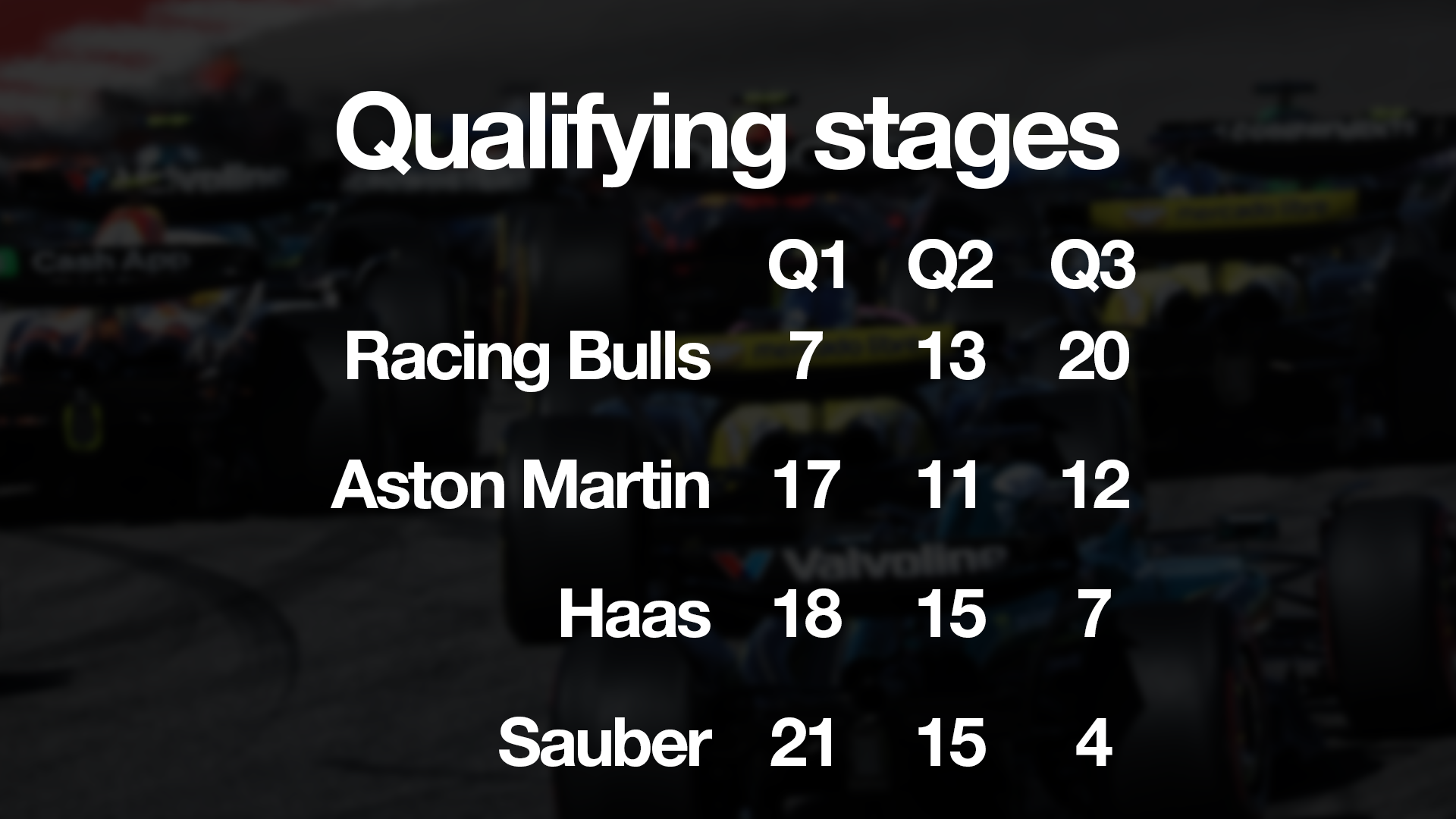
As Bortoleto showed in Mexico, where he climbed from 16th on the grid to 10th, the car has the speed to push into the points but that always means he and Hulkenberg are up against it in the races. Even when Hulkenberg had his long-awaited first podium finish in F1 at Silverstone, that relied on well-timed tyre calls in wet conditions to catapult him from 19th up to third.
So while the Racing Bulls is a predictable car at the limit, the Sauber is more capricious. It’s capable of rapid laptimes, but both drivers have had more than their fair share of qualifying sessions where a few tenths are left on the table. And that can make the differences between a Q3 place and the back row.
Improving qualifying pace is now the main target given there will be no more upgrades before the end of the year. And team boss Jonathan Wheatley thinks that’s possible given the impressive performance gains early in the year show a sound fundamental understanding of how the car is working.
If – and it’s a big if - Sauber can deliver on that objective, without sacrificing much, if any, of its Sunday pace, then it will be a formidable force in the remaining four events, as F1’s other biggest championship fight is decided.


